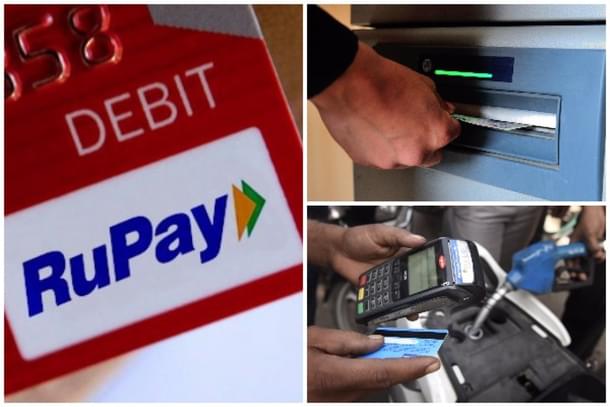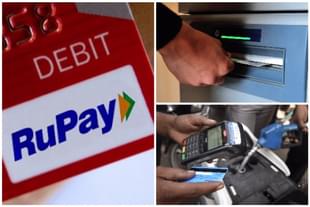Economy
RuPay Moves Towards Bhutan And India Towards Integrating South Asian Economies
Jaideep Mazumdar
Jan 22, 2019, 04:05 PM | Updated 04:05 PM IST
Save & read from anywhere!
Bookmark stories for easy access on any device or the Swarajya app.


India has initiated a revolutionary measure to integrate its ‘financial switch’ with that of Bhutan to facilitate cross-border digital payments. Indians visiting Bhutan will be able to use their RuPay cards at ATMs and point of sales (PoS) terminals in that country while banks in Bhutan will issue RuPay co-branded cards to Bhutanese nationals who can then use them in all ATMs and PoS in India.
This will benefit travellers and businessmen of both the countries since they will no longer have to rely on Visa or MasterCard, which are expensive to use. The providers (banks) of credit or debit that use the international Visa or MasterCard gateways charge in US dollars for overseas transactions. The gateways also charge the banks for availing their services, and levy membership, compliance and transaction costs.
This results in avoidable foreign exchange outflows. With the Reserve Bank of India (RBI) and Bhutan’s Royal Monetary Authority (RMA) deciding to integrate the financial switches of both the countries, transactions by nationals of the two countries will become much easier. It will also result in significant costs savings for the banks of both the countries.
The decision on this integration was reportedly taken about two years ago after a presentation made by RBI officials to the Prime Minister’s Office (PMO) at which Prime Minister Narendra Modi was present. Modi is said to have shown a lot of enthusiasm and took it up with the Bhutanese monarch and the then Prime Minister of that country. The two also favoured the idea instantly and work on this integration started immediately. Modi set a deadline of March 2019 for all the work to be completed and the system to become operational. The integration cost about Rs 2.7 crore, which will be borne by India.
According to top officers of the Finance Ministry, this integration will result in a huge increase in the use of RuPay cards, India’s first-of-its-kind domestic debit and credit card payment network. RuPay is being actively promoted by Prime Minister Modi, who has made it the card of choice for the Pradhan Mantri Jan Dhan Yojana. Even though the RuPay project was initiated during the Congress-led United Progressive Alliance regime, it is the National Democratic Alliance government that has pushed and popularised it.
Sources in the Finance Ministry say that depending on the success of the financial switch integration with Bhutan, India will move towards similar arrangements with friendly nations in the region with which India has strong ties in trade and tourism. The next countries on India’s radar for this arrangement could be Maldives, Bangladesh and Nepal. But, the Finance Ministry officers pointed out, that is still some time away since a lot of financial issues have to be sorted out bilaterally with those countries.
As for Bhutan, the banks there will benefit immensely from the new arrangement. Till now, when an Indian tourist visiting Bhutan withdraws money from an ATM or uses his debit or credit card at a PoS there, the transaction results in an immediate outflow of foreign exchange from Bhutan. It takes a few days for the amount to be credited to the RMA by the State Bank of India (SBI), with which the RMA maintains its account. That results in a substantial financial loss.
But after this integration, which will happen very soon, the amount transacted through RuPay cards in Bhutan would be immediately credited to the RMA by the SBI. Since both countries have a one-to-one fixed exchange rate (that is, one Indian Rupee = One Bhutanese Ngultrum), there will be no hassles in exchange and settlement.
This, however, is not the case with other countries in the region. But Finance Ministry sources pointed out that the problems in integration of financial switches (with other neighbouring countries) arising out of currency exchange rates would not be insurmountable. That’s because they have stable currencies and the exchange rates vis-a-vis the Indian Rupee has been steady.
For instance, the exchange rates with Bangladesh (1 INR = 1.8 Bangladeshi Taka), Nepal (1 INR = 1.59 Nepalese Rupee), Sri Lanka (1 INR = 2.55 Sri Lankan Rupee) and Maldives (1 INR = 0.22 Maldivian Rufiyaa) have been consistent for quite some time. For obvious reasons, India is not considering any such arrangement with Pakistan.
Prime Minister Modi is said to be personally supervising the integration of the financial switches of the two countries and will be monitoring the implementation of this landmark development.
The PMO is coordinating with the RBI and the RMA to ensure the success of this arrangement. This is also a significant diplomatic deal for India since such financial integration has not happened elsewhere in the world.
New Delhi is poised to showcase this to the international community as a prime example of regional cooperation. Also, India stands to gain a lot of goodwill from Bhutan, and from the smaller countries of the region who eventually come on board this mutually-beneficial arrangement.




